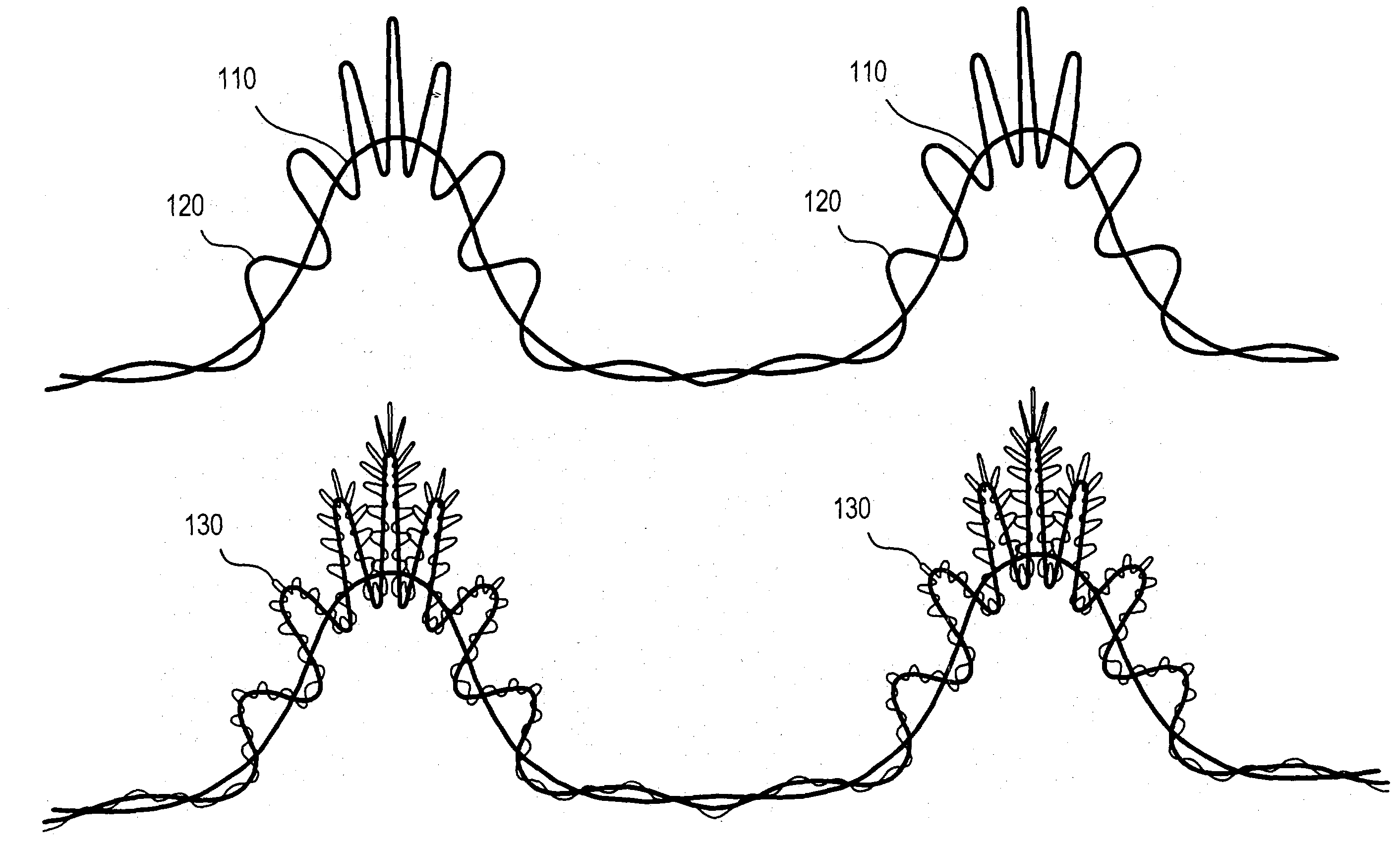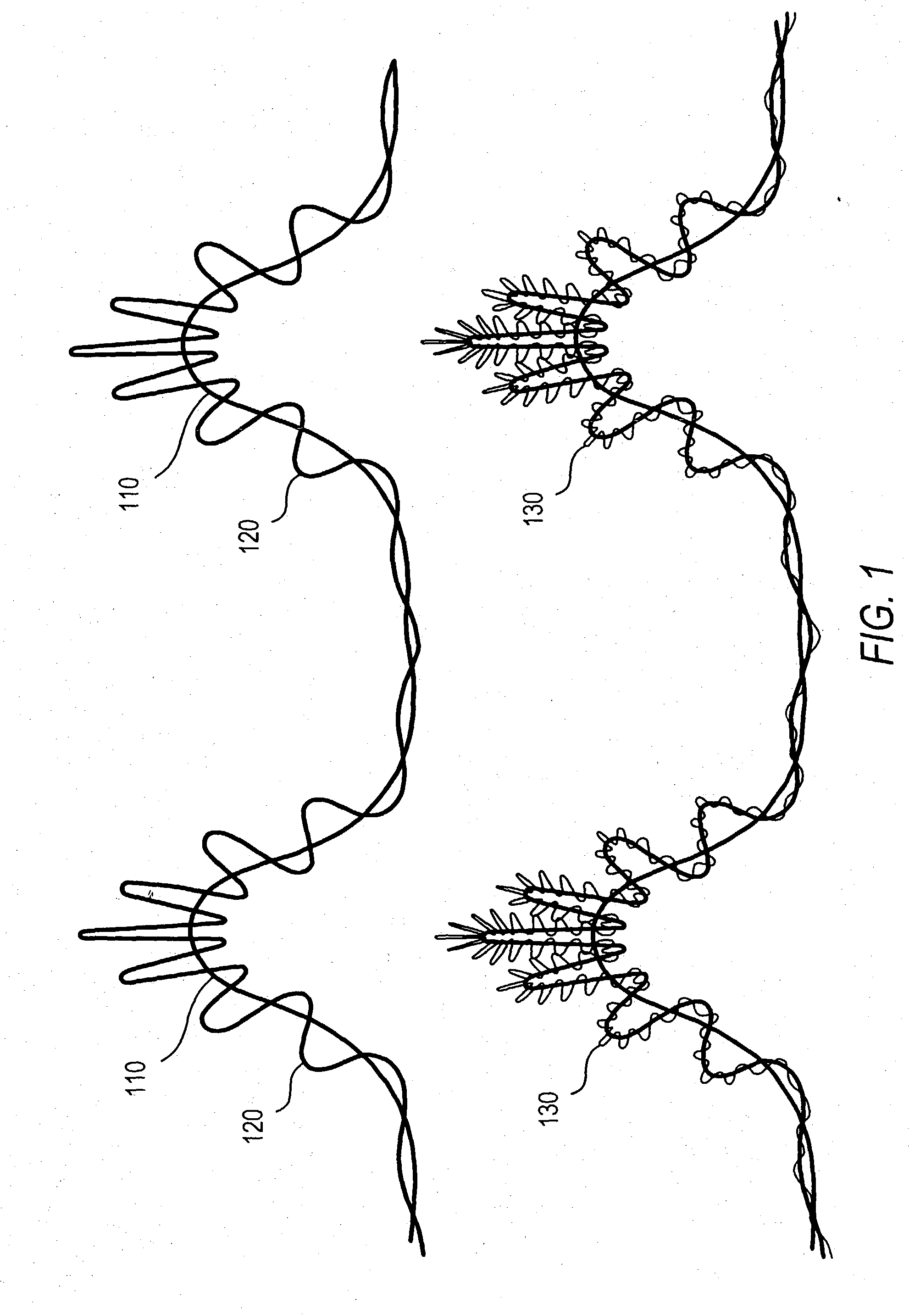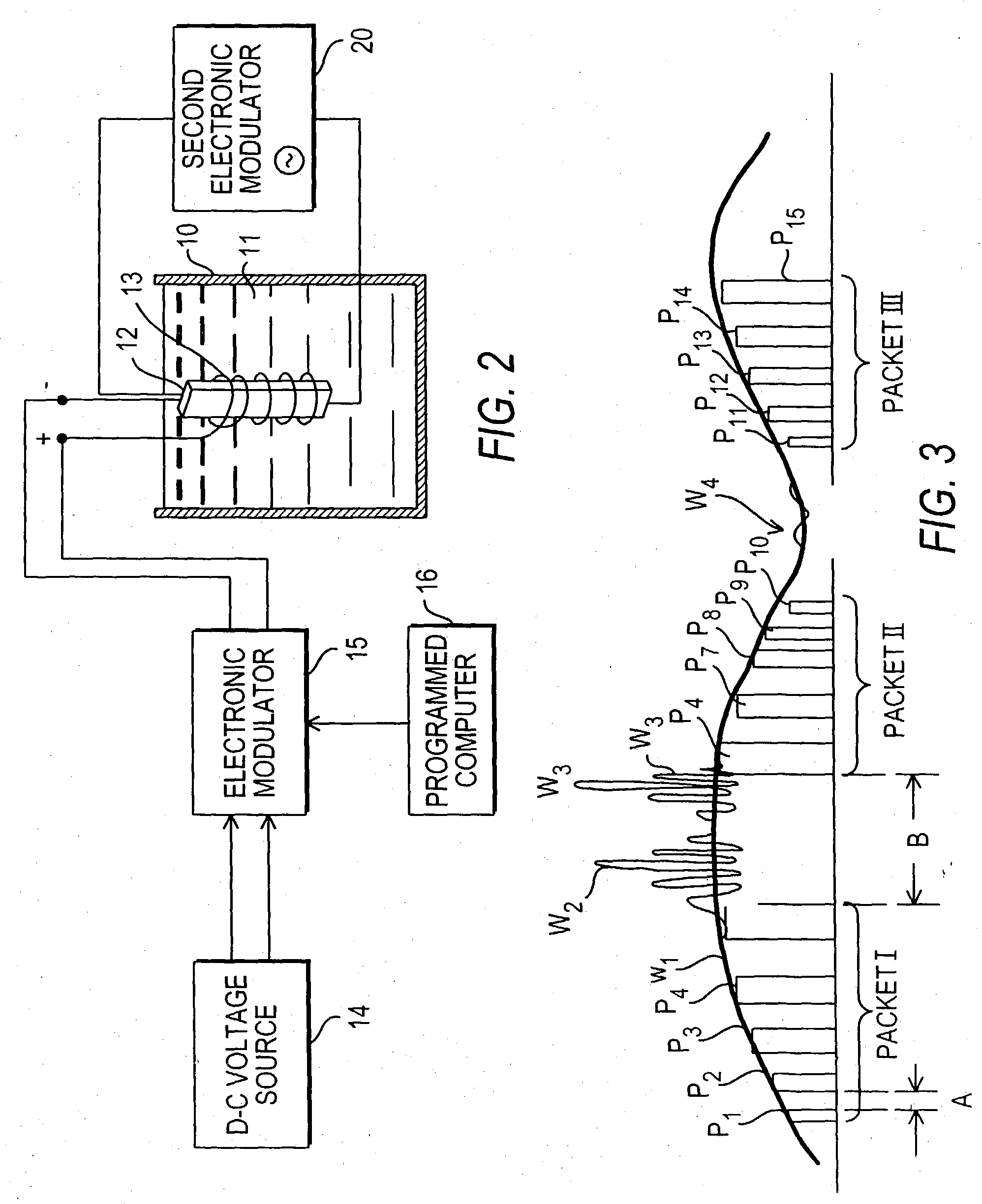Pulsed electrolytic cell
a technology of electrolytic cells and electrolytic coatings, applied in the direction of electrolytic coatings, surface reaction electrolytic coatings, coatings, etc., can solve the problems of inability to predict whether such generators will ever be used, decompose into constituent elements, and achieve the effect of increasing resistivity
- Summary
- Abstract
- Description
- Claims
- Application Information
AI Technical Summary
Benefits of technology
Problems solved by technology
Method used
Image
Examples
Embodiment Construction
[0027] Superlooping:
[0028] The present invention represents a significant advance beyond the discovery at the Los Alamos National Laboratory that a greater production of excess heat is obtained in an electrochemical cell by pulsing the current flowing through the cell. In the present invention, applied to the electrodes of the cell are voltage pulses to produce a pulsed current flow in the cell. However, these pulses are not of constant amplitude and duration but are in a pattern in which the amplitude and duration of the pulses and the intervals therebetween are modulated to give rise to a dense packing, for example, of deuterium ions in the palladium electrode that promotes a fusion reaction.
[0029] This pulse pattern is in accordance with superlooping activity as set forth in the theory advanced in the Irving I. Dardik article "The Great Law of the Universe" that appeared in the March / April 1994 issue of the "Cycles" Journal. This article is incorporated herein by reference.
[0030]...
PUM
| Property | Measurement | Unit |
|---|---|---|
| frequency | aaaaa | aaaaa |
| frequencies | aaaaa | aaaaa |
| energy | aaaaa | aaaaa |
Abstract
Description
Claims
Application Information
 Login to View More
Login to View More - R&D
- Intellectual Property
- Life Sciences
- Materials
- Tech Scout
- Unparalleled Data Quality
- Higher Quality Content
- 60% Fewer Hallucinations
Browse by: Latest US Patents, China's latest patents, Technical Efficacy Thesaurus, Application Domain, Technology Topic, Popular Technical Reports.
© 2025 PatSnap. All rights reserved.Legal|Privacy policy|Modern Slavery Act Transparency Statement|Sitemap|About US| Contact US: help@patsnap.com



